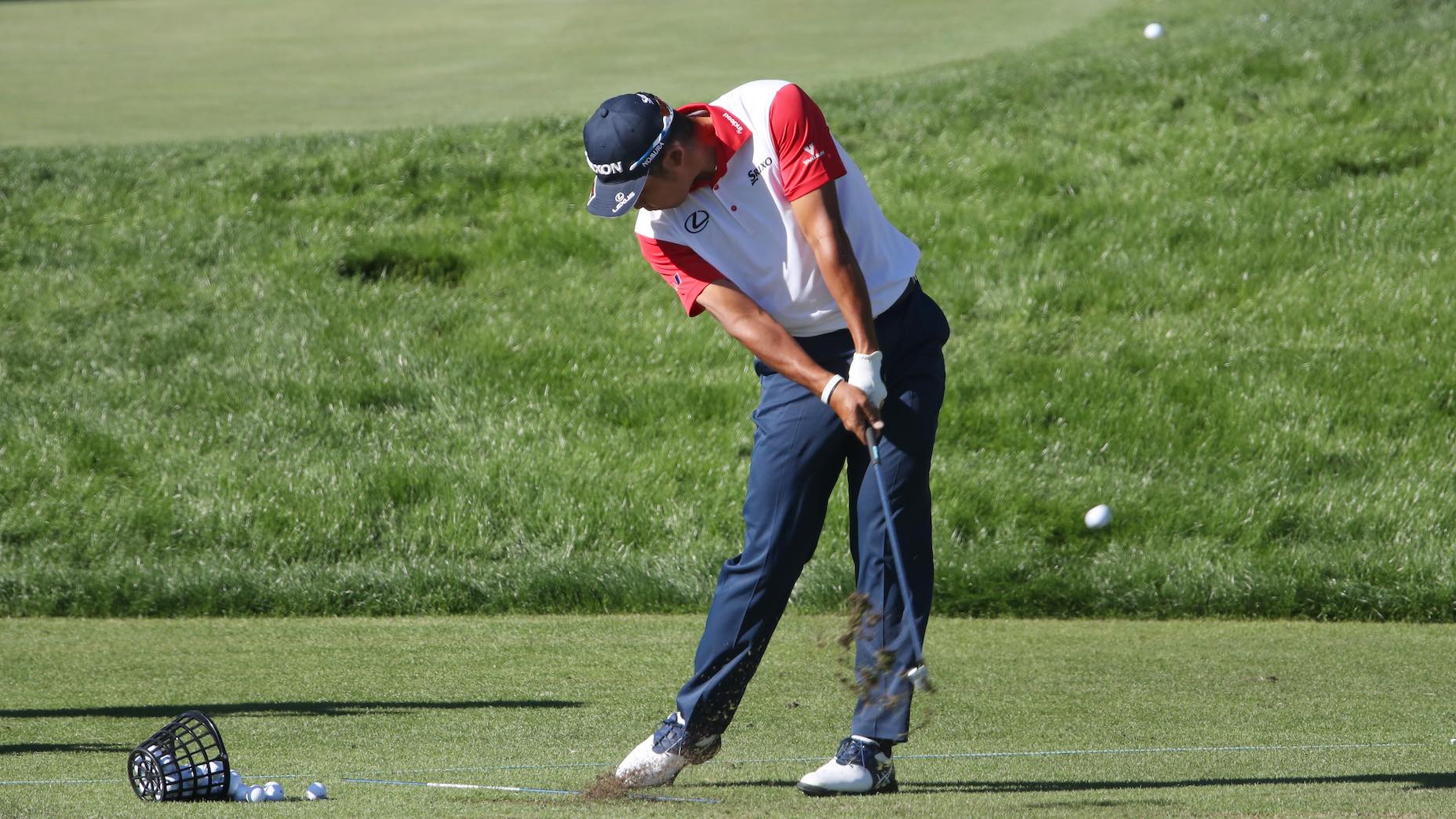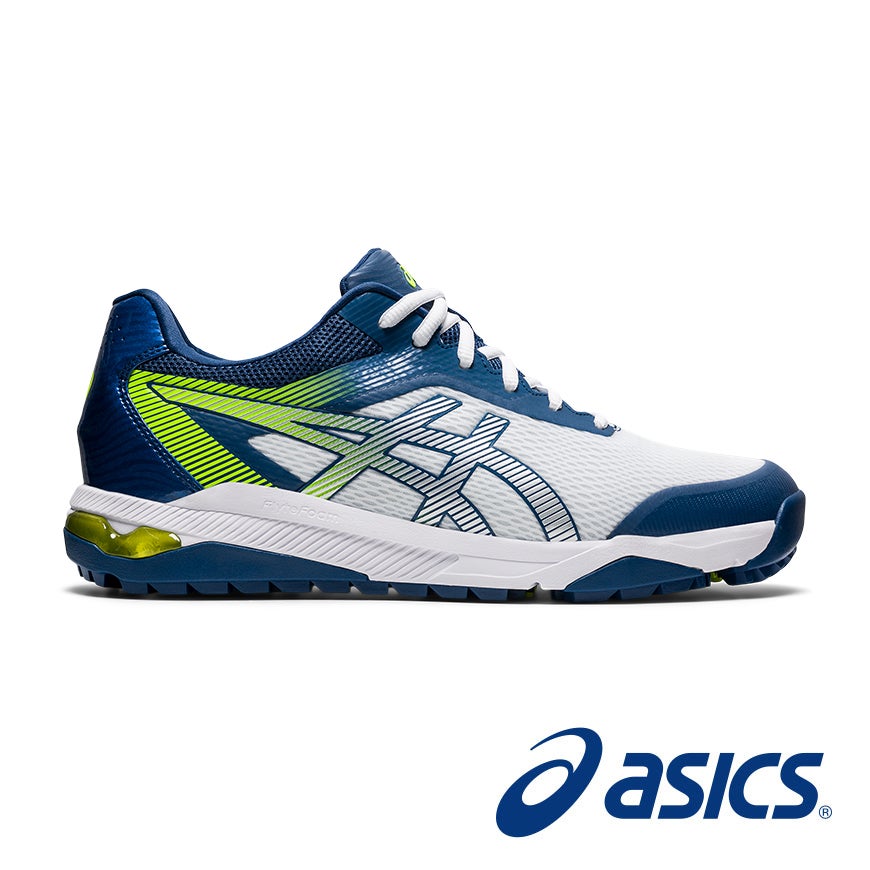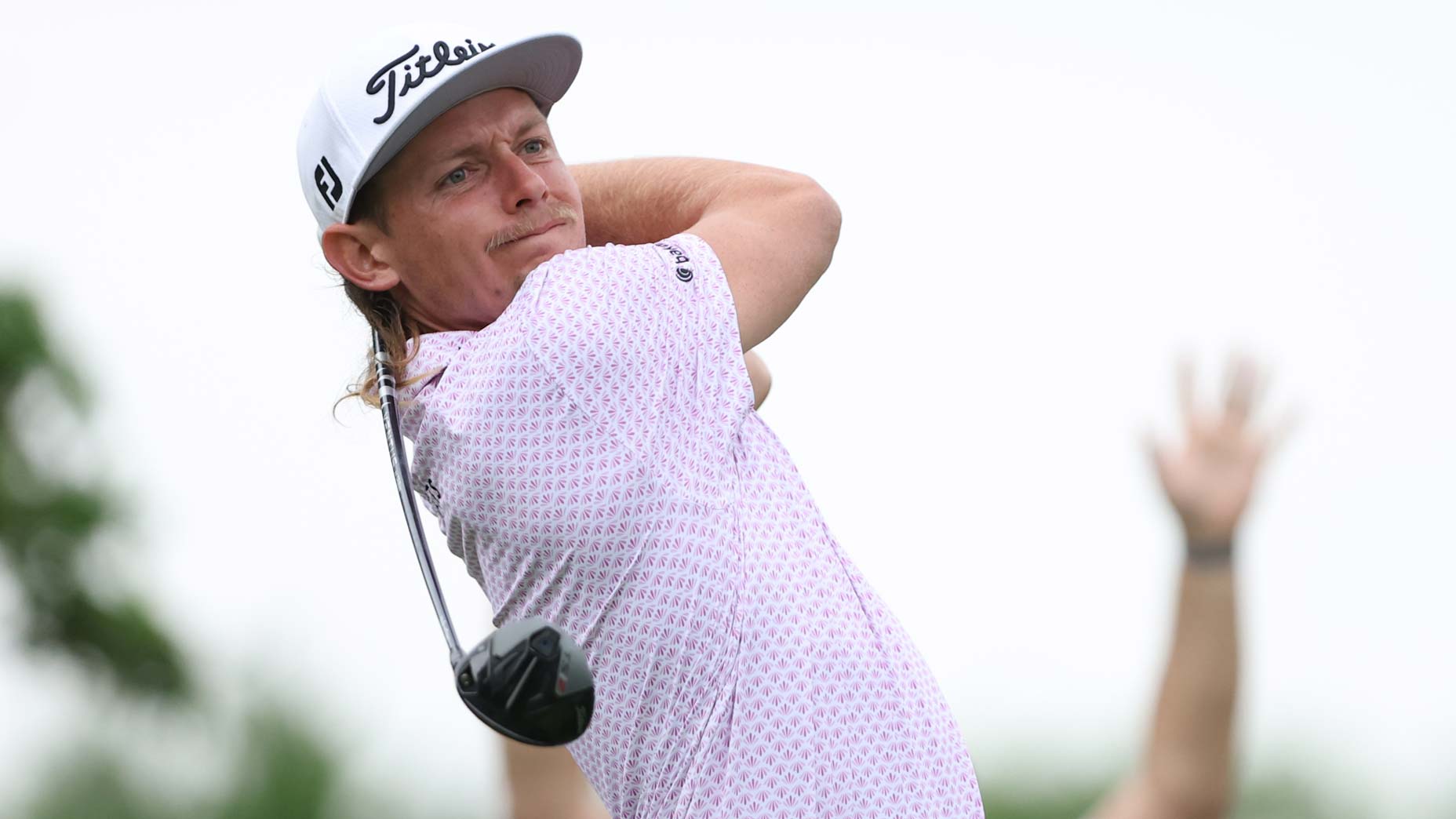
Matsuyama and the rest of his tour brethren wear golf shoes when they practice during a tournament.
Getty Images
Welcome to another edition of the Fully Equipped Mailbag, sponsored by Cleveland/Srixon Golf, an interactive GOLF.com series in which we field your hard-hitting gear questions.
Wearing golf shoes while you practice is a no-brainer. In most situations, the biggest advantage to wearing them is clear: you’ll get a better grip with golf shoes than with most casual or street shoes. But, is that really all there is to it? Is wearing golf shoes while you practice worth the hassle only because they grip the turf (or range mat for the matter) better than your regular shoes do?
It’s not uncommon to find GOLF.com staffers wearing golf shoes as their daily drivers here in the office. It’s easy to see why with so many golf shoe styles mimicking the look and feel you get from street and/or athletic shoes. And I don’t know if you’ve been there, but it’s a nice feeling to know you can wear the same shoes to the course and out to dinner afterward. So for those of you like us who wear golf shoes practically every day, this question doesn’t really apply.
But if that isn’t you, and you normally wear your casual or dress shoes as your regular shoes, you most definitely should consider wearing golf shoes every time you practice. Let’s look at a handful of reasons why:
You’ll grip the ground better and have more stability
Again, wearing golf shoes when you practice means you’ll have a better grip on the turf, and also on those darn range mats that we all are sometimes forced to use. A better grip ensures less twisting and sliding as you swing, helping you develop the proper feels in the feet and lower body as well. If you’re practicing and your feet are sliding around, you run the risk of making your swing worse, not better.
You’ll slide less in the shoe
Golf shoes, especially modern-day shoes that have athletic shoe profiles, are designed to not only provide ample traction and stability on the outside of the shoe, but inside the shoe as well. The Srixon/ASICS GEL-ACE Pro M Standard golf shoe is a prime example of this, built with a rigid X-shape TPU Trusstic midsole that cradles the middle of the foot for a snug fit. Additionally, the GEL-ACE Pro has added ankle padding for less lifting and sliding of the foot as you swing. Which by the way, when you practice you’re likely to make two-to-three times more full swings hitting a bucket of 90 golf balls than you would playing a round of golf. That’s a lot of wear and tear on your feet, and if they aren’t anchored well in a golf shoe when you practice, you’ll pay for it sooner or later.
All of our market picks are independently selected and curated by the editorial team. If you buy a linked product, GOLF.COM may earn a fee. Pricing may vary.
Asics Gel-Course Ace
The Gel-Course Ace golf shoe provides improved traction and cushioning for the fairway while offering a low-profile, yet sophisticated design.
You’ll have a familiar amount of toe drop
Toe drop refers to the angle from the heel of the shoe towards the toe. Barring shoes like high heels, cowboy boots and heavy-duty work boots (seriously, are any of you really hitting a bucket of balls wearing of those?) running shoes tend to have the most toe drop, averaging somewhere between 10 to 12mm from the heel to the forefront of the shoe. There are such things as no-drop shoes, but generally, most running shoes have raised heels to lessen the shock from the heel striking the ground while running. The point being, it’s likely your running shoes have more toe drop than do your golf shoes, which could lead to a whole different set of feels and weight/balance issues when you switch from running shoes when you practice to more neutral drop golf shoes when you play. I.e., more toe drop may lead to less weight placed over the heels in your stance, causing your weight to shift differently than it normally does when wearing shoes your golf shoes that are more level with the ground.
You’ll have more lateral support as you practice
Golf shoes aren’t only designed for comfort while walking and for helping to grip the turf better, they’re also designed to provide lateral support as well. This means they have uppers that cradle the foot on both the outside and inside of the foot, and they also come with wider soles and aggressive traction patterns to account for the side-to-side momentum that takes place in the golf swing. If you swing with running shoes, casual shoes or even street shoes, you likely won’t have the lateral support you need, causing you to swing less efficiently and in some cases, could actually lead to injury or at best, sore feet and ankles. This is especially true when hitting balls off hard range mats. Trust us, a rolled ankle on a range mat is a terrible thing.
Bonus reason: Golf shoes can actually help you hit it further
We checked, and it’s true. Golf shoes like the Srixon/ASICS GEL-ACE Pro M Standard are built to flex in certain areas while remaining rigid in others, helping to actually increase torque and resistance during the golf swing. If you’re still not convinced, consider all the aforementioned reasons why golf shoes make sense to wear as you practice. Knowing what you now know, you’ll think less of your golf shoes and be able to swing with more confidence and hopefully, with a boost of power knowing you have a firm and secure footing as you swing.
Want to overhaul your bag for 2022? Find a fitting location near you at GOLF’s affiliate company True Spec Golf. For more on the latest gear news and information, check out our latest Fully Equipped podcast below.









